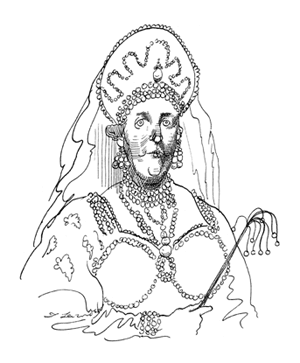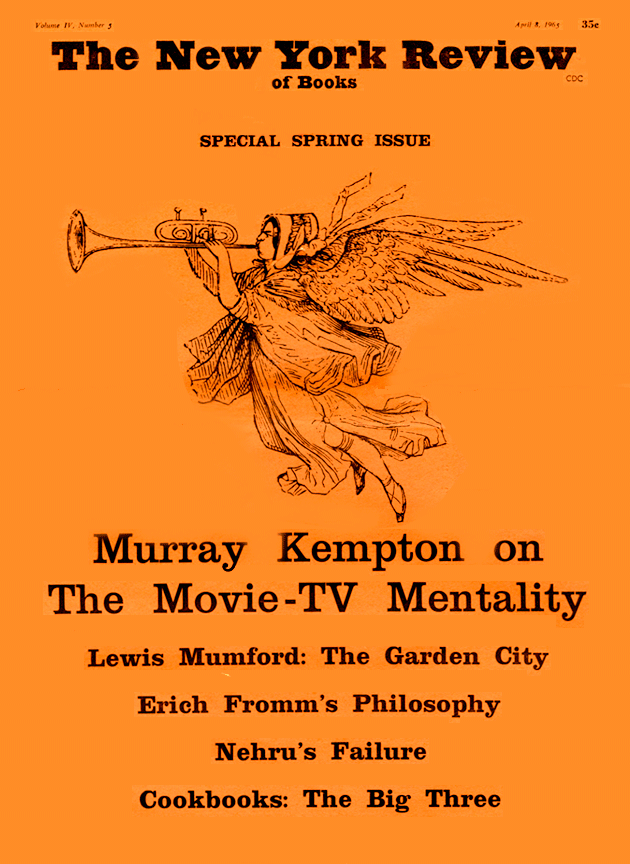Mme. Oldenbourg’s subject is the human drama of Catherine the woman viewed as the prelude to the political epic of Catherine the sovereign. She focuses on Catherine’s formative years, beginning in 1744 when the fourteen-year-old Princess Sophia-Augusta of Anhalt-Zerbst was summoned to Russia by Empress Elizabeth to marry the latter’s nephew and heir, Peter Ulrich of Holstein, and culminating in 1762 when, at thirty-three, she acceded to absolute power in her own right. The author’s aim is to explore the wellsprings of the character of this foreigner who had no legitimate title to rule Russia, but yet stepped to the throne over the body of her husband—murdered by the henchmen of her third lover—and who then managed to keep her son Paul from his birthright of empire during the thirty-four years of her reign. This familiar story—known partly through her own Memoirs—is rather too gaudy and obvious a subject for histoire romancée; yet Mme. Oldenbourg rises above these difficulties to give us a portrait of Catherine and her entourage that is amazingly fresh and illuminating.
She accomplishes this by a scrupulous presentation of the historical record subtly combined with novelistic techniques. The result is a wonderfully juste and sensitive psychological portrait of a young woman’s development amid the deforming pressures of Elizabeth’s court. Long before Sophia developed the dubious talents that made her Catherine the Great, she had been a sensitive, high-spirited—even high-minded—little girl who, after her mother was sent home from the Russian court in disgrace as a Prussian agent, found herself precariously alone in an alien world at the age of fifteen. She was then married to a strange, tormented, unattractive boy, who like herself was an exile from Germany but, unlike her, was too resentful of his gilded captivity to adapt himself to the country he was to rule. She lived with him for seven years in total innocence. It was a complex relationship that combined childish solidarity against the adult world of Elizabeth’s court with a growing hatred of each other as they matured. When she was twenty-three, Catherine was very likely maneuvered by Elizabeth into the arms of her first lover in order to provide that heir to the throne which the aging sovereign finally concluded her nephew could not provide. She fell sentimentally in love with him, only to be abandoned once his vanity was satisfied by the exalted conquest, and then nearly died in childbirth. The son she had produced was taken away from her by Elizabeth. Left to the world of court intrigue and high politics, she discovered with delight her gifts for these dangerous, necessary games. As Elizabeth lay dying, Catherine not only saw that she had no choice but to fight for power against her husband if she did not wish to be destroyed by him, but soon concluded that she might as well improve upon necessity by seizing the throne in her own name rather than, as regent, in that of her son.
If Mme. Oldenbourg has a thesis, it is that Catherine’s unseemly enthusiasm for the masculine art of politics was her creative response to a sacrificed girlhood and to the wretched failure of her life as a woman and a mother. The Catherine that emerges from these pages is both touching and unsavory, somehow admirable even when she is most appalling—and this without any psychological contradiction. Mme. Oldenbourg is equally skillful, and perhaps even more moving, in presenting the revers de la médaille of Catherine’s brilliant destiny: the tragedy of her husband. Whereas previous historians have dismissed Peter as a monster, Mme. Oldenbourg portrays him as pathetically sick, a man whose chances as a human being were sacrificed in childhood even more ruthlessly than those of Catherine—whose weakness was compounded by her strength, and who responded to the outrages of his upbringing by a childish hatred of Russia that made it impossible for him to rule. Catherine was the only alternative to this ruler who would not rule. Finally, Mme. Oldenbourg is as successful as one can be in conveying the enigmatic inner world of Empress Elizabeth, the architect of the two warped childhoods that worked themselves out in tragedy a few months after her death. By an adroit use of the techniques of the psychological novel, Mme. Oldenbourg manages to present these familiar personal histories with extraordinary verisimilitude.
And yet, in spite of her Russian birth and early education, several factual errors indicate that Mme. Oldenbourg is rather less at home in Russian history than in the medieval past of her adopted country, France. Thus she is more convincing in portraying Catherine, Peter, and Elizabeth as individuals than in depicting eighteenth-century Russia; whereas in writing about medieval France she gives us both vivid personalities and a whole cultural milieu. Moreover, though Mme. Oldenbourg is at ease with the visceral beings in her medieval novels, she shows less insight into the sophisticated intellectual life. In addition to being every inch the eternal woman to whom Mme. Oldenbourg does justice, Catherine was also an eighteenth-century intellectual, an amateur philosophe, a voluminous writer, and the first to purvey the Enlightenment to Russia. These aspects of her character Mme. Oldenbourg unfortunately ignores. Yet surely it is this side of Catherine (which was much in evidence before she came to the throne and was indeed directly related to her self-preparation for power) that is the fascinating, singular, and historically significant aspect of her story.
Advertisement
The fact is that relatively recent periods of history lend themselves less readily to Mme. Oldenbourg’s gifts than do the Middle Ages. Her talent, whether in novels such as The World is Not Enough and Destiny of Fire or in a “straight” history such as Les Bûchers de Montségur, is to recreate, through the accumulation of personal memoirs and biography, the atmosphere of an entire society and age. In works such as these her art is notable precisely because the period does not offer the sources necessary for the detailed exploration of individual lives (a medieval biography based solely on verifiable fact makes dull and sketchy reading indeed). The way is therefore opened for the exercise of talents more usually associated with the novel than with history, and Mme. Oldenbourg can create fullbodied men and women where the sources permit us to divine only silhouettes. She does this, of course, not by arbitrarily inventing character or episodes, but by extrapolating from what the sources do reveal what may plausibly be supposed in areas where they are silent. Her historical knowledge and human perception are so great that the missing links she thus supplies have the same air of authenticity as what we know for positive fact. She provides us with the same intimate views of the remote past that we have of our own age but which the guild historian cannot furnish.
For more recent and abundantly documented periods of history, however—beginning, say, with the eighteenth century—fictional biography becomes less necessary because real biography is now possible. The historical novel, therefore, largely sinks to the level of popularization, leaving to the serious novelistic historian only the domain Mme. Oldenbourg has explored in Catherine: refinement of the record by the application of an acute psychological insight. The scope is restricted in still another way, for when the record is reasonably ample, though not absolutely complete, it is no longer legitimate to close the gaps with speculation. Thus, paradoxically, the portraits of Mme. Oldenbourg’s real eighteenth-century subjects are less clearly drawn than those of her imaginary twelfth-century characters: she can never say with certainty, for example, who was the father of Catherine’s son or how, exactly, she reacted to Peter’s murder, whereas she can tell us all we might conceivably wish to know about her medieval heroes. For the eighteenth century she can greatly sharpen our perceptions; but, by the very nature of things, she cannot perform the more dazzling feat of re-creating an entire world in its immediate reality. And it is on this feat that her reputation, rightly, must rest, for it is the remote past that is, par excellence, the creative domain of the novelistic historian.
This Issue
April 8, 1965



